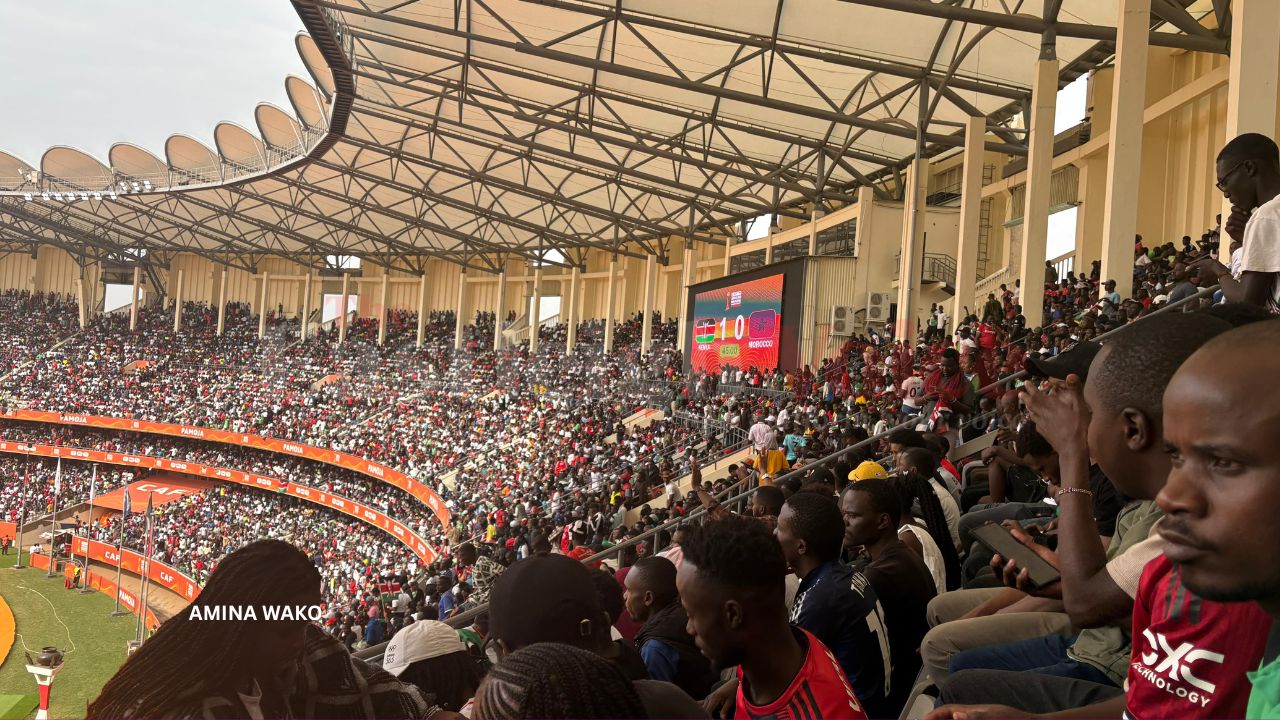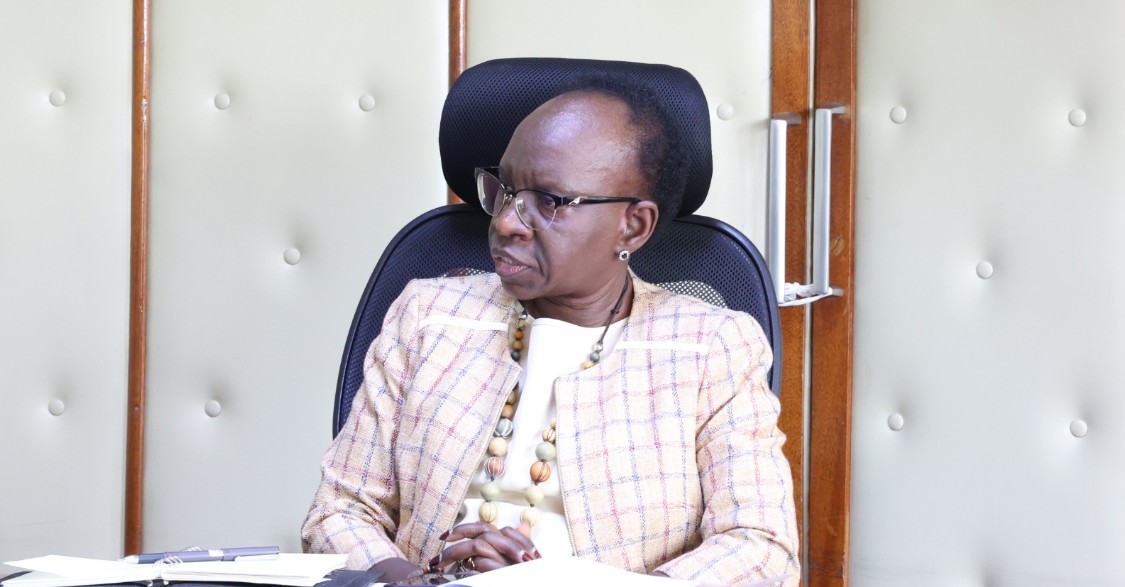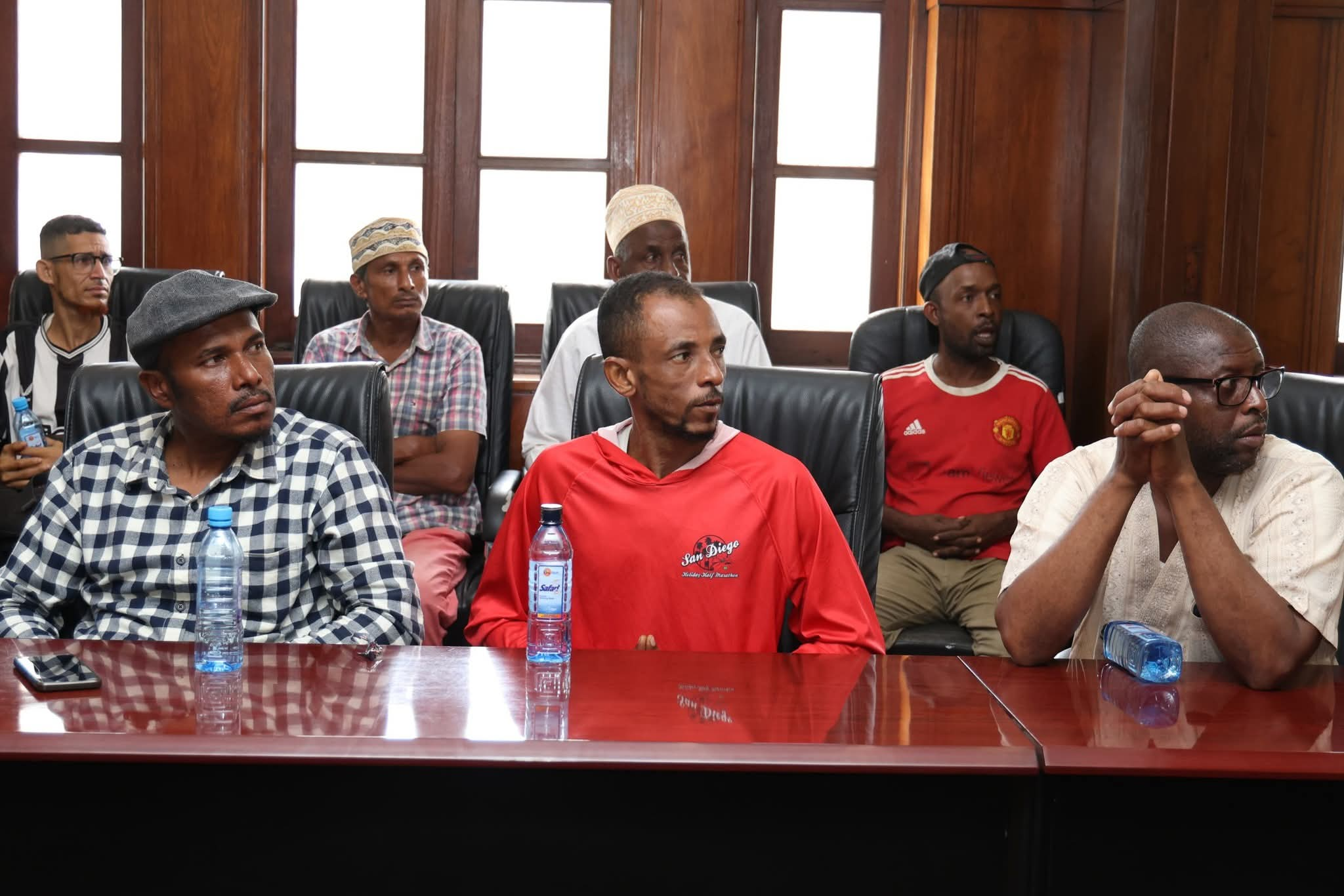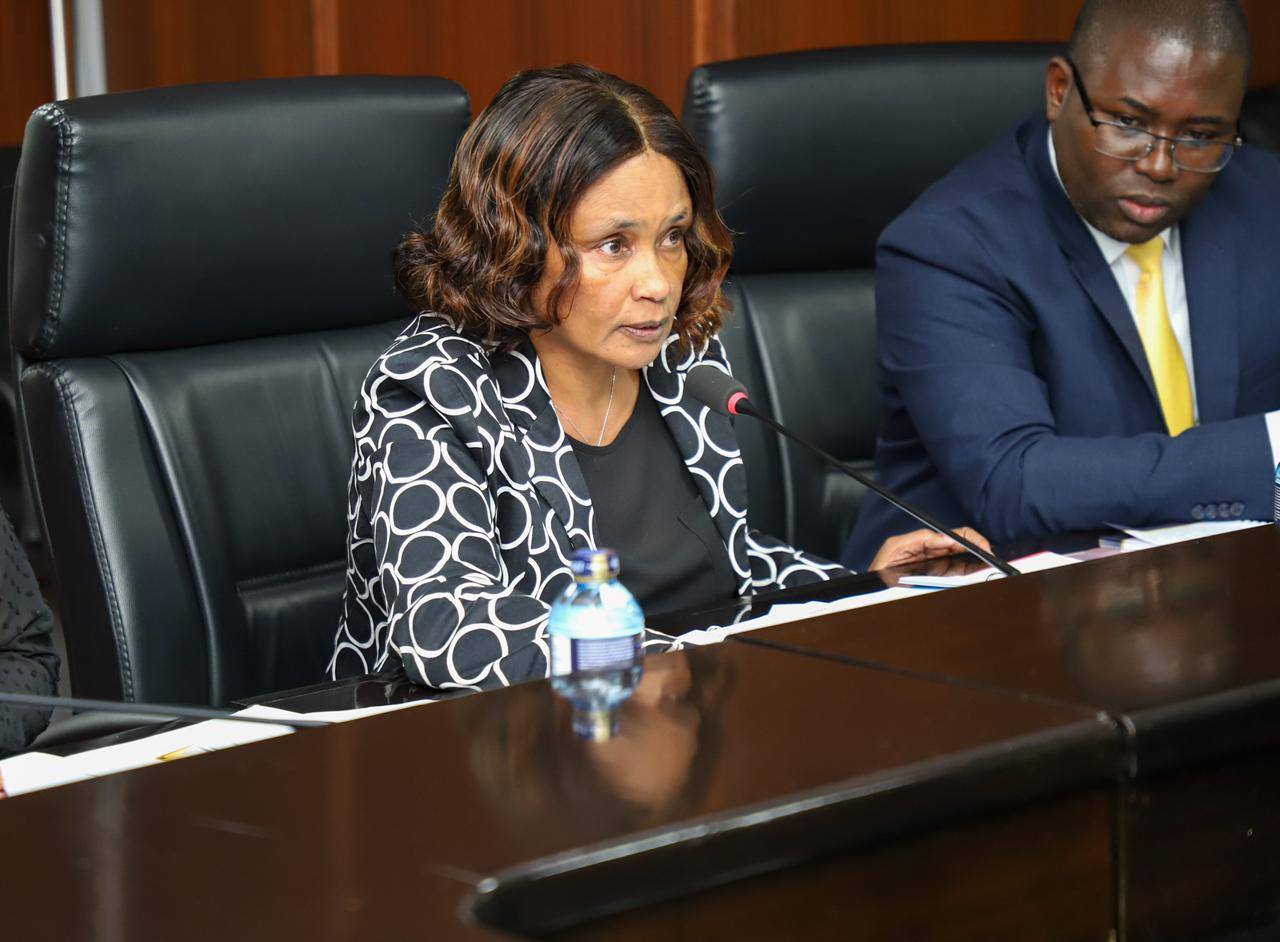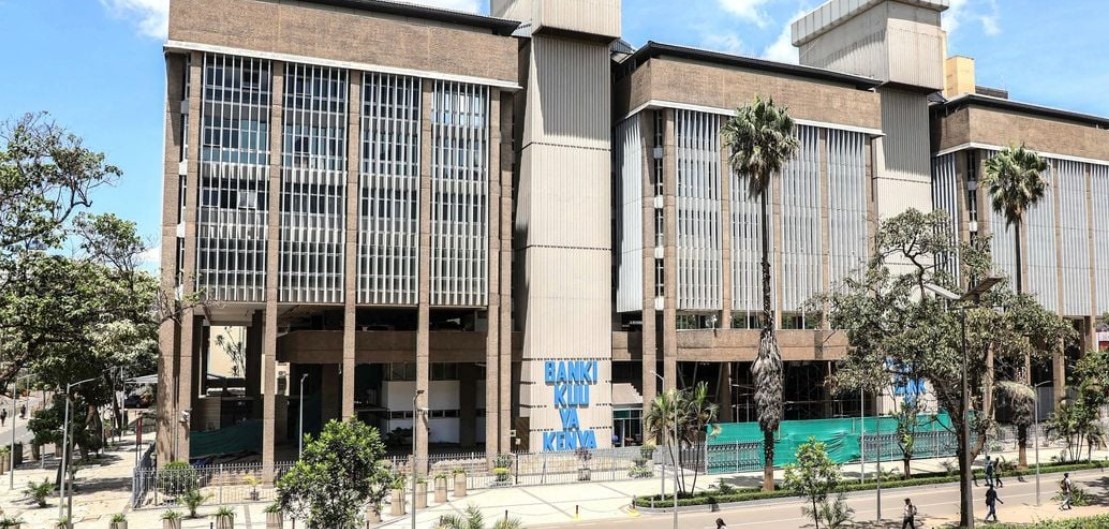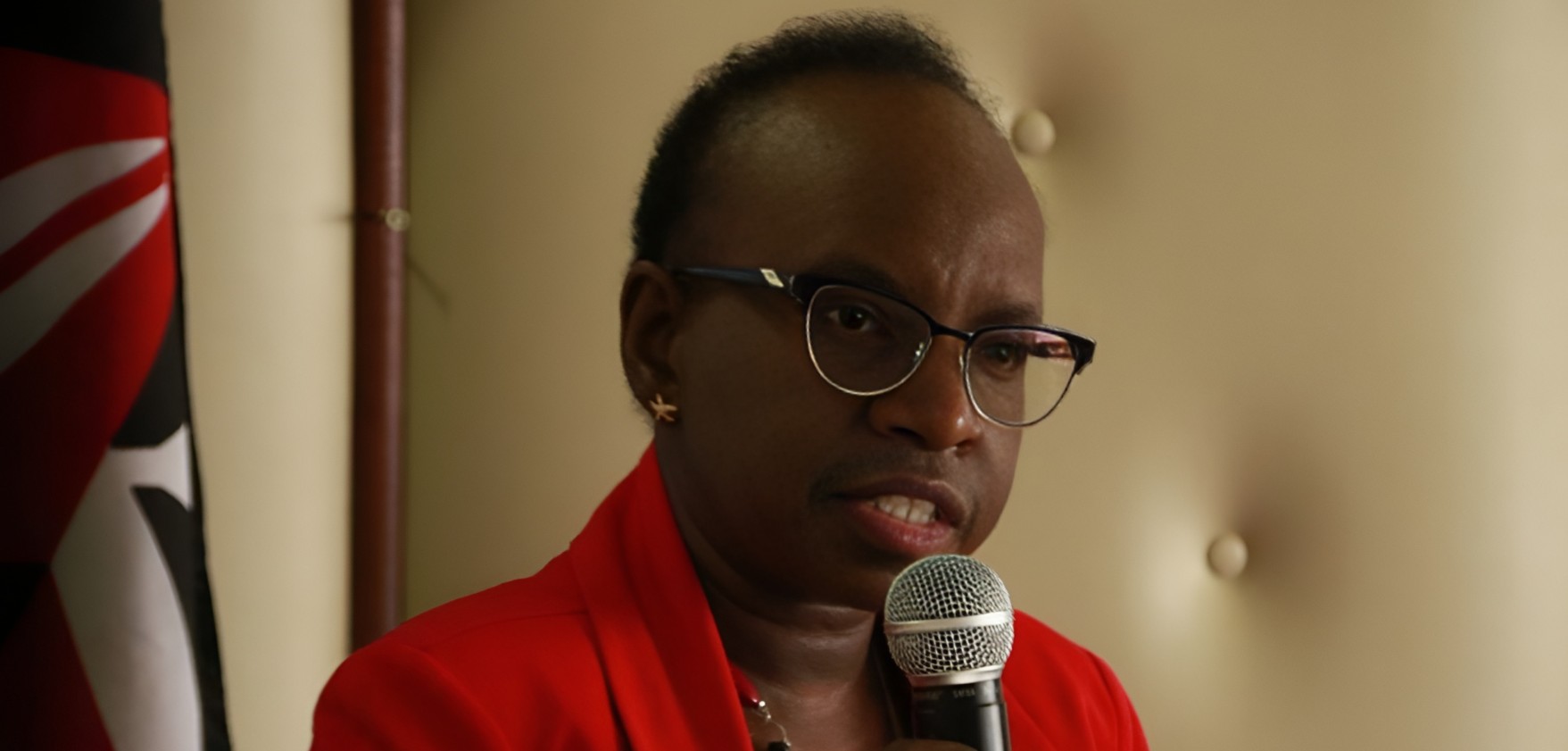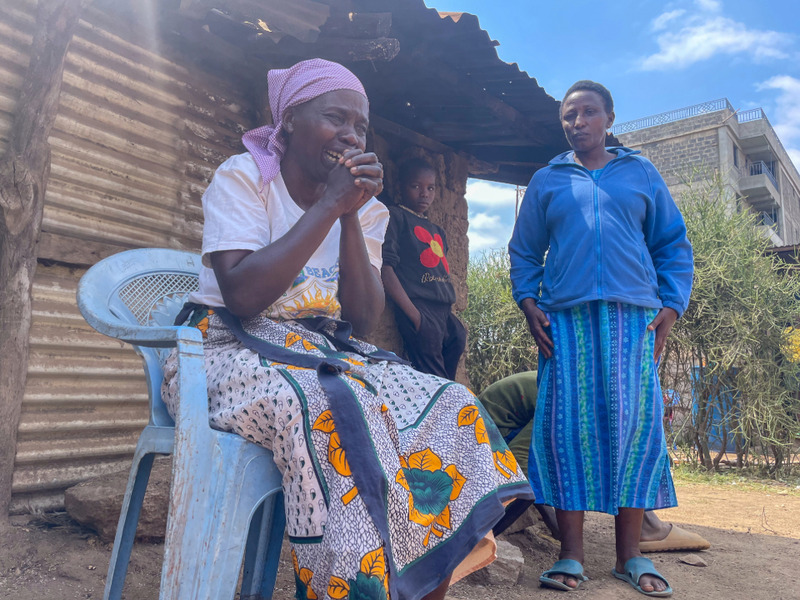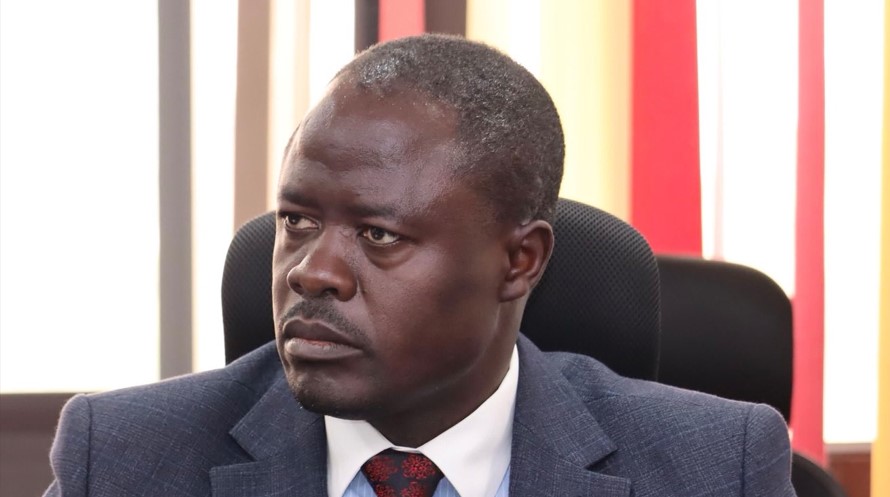Kenyan artists reflect Gen Z hopes and frustrations in new exhibition
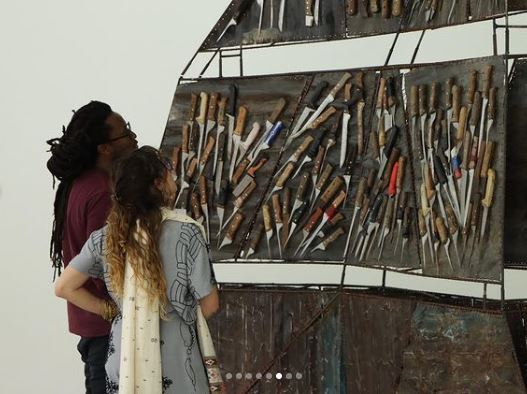
While creating space for self-reflection, it also gives voice to voiceless communities and concerns around capitalism and climate change.
As young protesters in Kenya took to the streets in June to demand the government account for its spending of taxpayers’ money, the Wajukuu Art Project was opening a new exhibition in Nairobi.
Visitors to In the Absence at The African Arts Trust Gallery are greeted by large installations. Draped materials hang from a pillowy sky, razor-sharp knives are welded to rusty iron sheets, suspended lanterns reflect off aluminium mirrors and poems are written on walls.
More To Read
- HIV prevention injection offers hope, but at a cost too high for many Kenyans
- Gen Z-led protests, floods dent Kenya's economic growth in 2024 to 4.7 per cent
- Butere Girls’ play 'Echoes of War' pulled from Western regional drama festival
- Raila: I stopped Ruto’s regime from falling under military rule during Gen Z protests
- The year youth-led protests redefined political resistance in Kenya
- Kenya's youth unemployment epidemic: A ticking time bomb for crime, violence
Kenyan curator Rose Jepkorir’s text on the exhibition proposes that In the Absence creates an atmospheric space where visitors can reflect on themselves – one that crosses dimensions and offers parallel universes. It employs everyday objects and materials as a way of doing that.
The exhibition represents as a powerful reflection of the frustrations and hopes of a new generation of Kenyans. While creating space for self-reflection, it also gives voice to voiceless communities and concerns around capitalism and climate change.
The poem on the wall
Art collectives (groups of artists collaborating together, often with a social purpose) have shot Kenya’s contemporary art scene to international recognition in the past few years.
Wajukuu was formed in 2003 as a collective for practising artists and a club to teach art to kids in Mukuru Runga Runga informal settlement. It’s headed by Shabu Mwangi, whose work forms a prominent part of the exhibition.
For him In the Absence is an invitation to be more self-aware, because often people are in the absence of themselves, not paying attention to who they are. A self-taught artist, he is inspired by what he encounters in his everyday life and how these experiences forge his politics. In a nation shaped by colonialism and capitalism, he believes Kenya lacks a collective social philosophy.
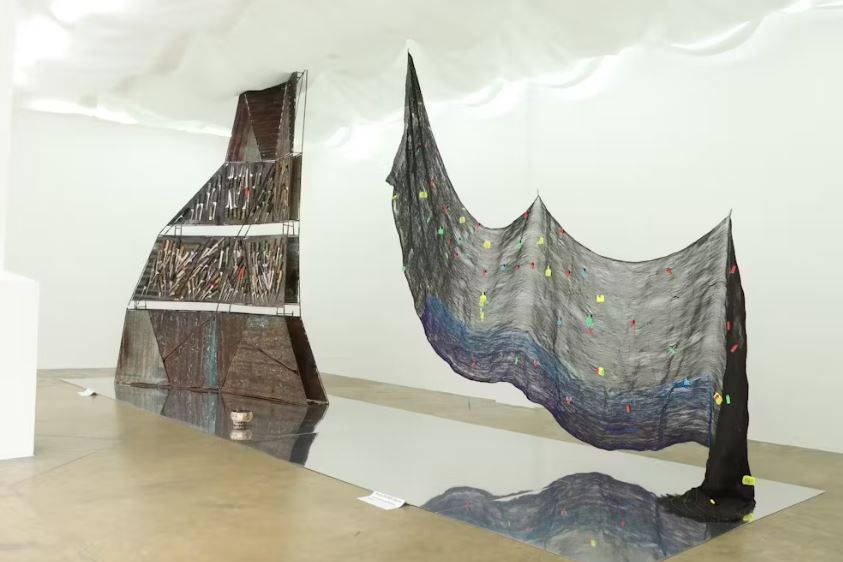 Part of the art on display during the opening of the exhibition on the Wajukuu Art Project in Nairobi. (John Mungai/1023 Studios/The African Arts Trust Gallery)
Part of the art on display during the opening of the exhibition on the Wajukuu Art Project in Nairobi. (John Mungai/1023 Studios/The African Arts Trust Gallery)
A painter whose work evolved into something more sculptural involving everyday materials, he also expresses himself through writing. An extract from one of his poems is displayed on a wall in the gallery:
The soul with the strongest aura touches the heart with its magnificence clinching and blowing a flame, neither cringing its surrounding realm.
It’s a reminder that, despite constant challenges, those with a strong resolve can spark inspiration within themselves. Despite his difficult upbringing and mixed cultural heritage, he has found inner strength through creative expression.
The exhibition draws the viewer in with sound created by Tibetan bowls that create music when touched with clappers. Mwangi wants the healing sound to invite visitors to take part in the exhibition and be present instead of absent. Aluminium mirrors in the works take the idea further. For Mwangi they allow people to see themselves in the space and to be in collaboration with the artworks.
The unlit lanterns
The first artwork the visitor encounters is composed of koroboi lamps, commonly used for lighting homes. Mwangi grew up with these homemade kerosene lanterns. For him, they represent the light of individualism in a capitalist world. The koroboi lamps on the show are not lit, though, also a statement. Using kerosene as fuel is a health hazard and bad for the environment. For him, fossil fuel use reflects a lack of collective responsibility in Kenya.
The many colours of the koroboi also bring to mind the diversity of cultures in the world. They form a unified artwork despite their individual differences.
All of this relates back to the recent Gen Z protests. For Mwangi, they marked a moment when Kenyans were able to look inward to find justice in an unjust society with unaccountable leaders. Sixty-one years after independence many Kenyans still rely on koroboi because they don’t have access to electricity – despite government promises.
Rusty iron and knives
Another Wajukuu artist in the exhibition is Ngugi Waweru. His work is made from rusty re-used iron sheets and discarded knives collected from various butcheries within the city. It’s based on the Kikuyu proverb: A sharp knife cuts the owner.
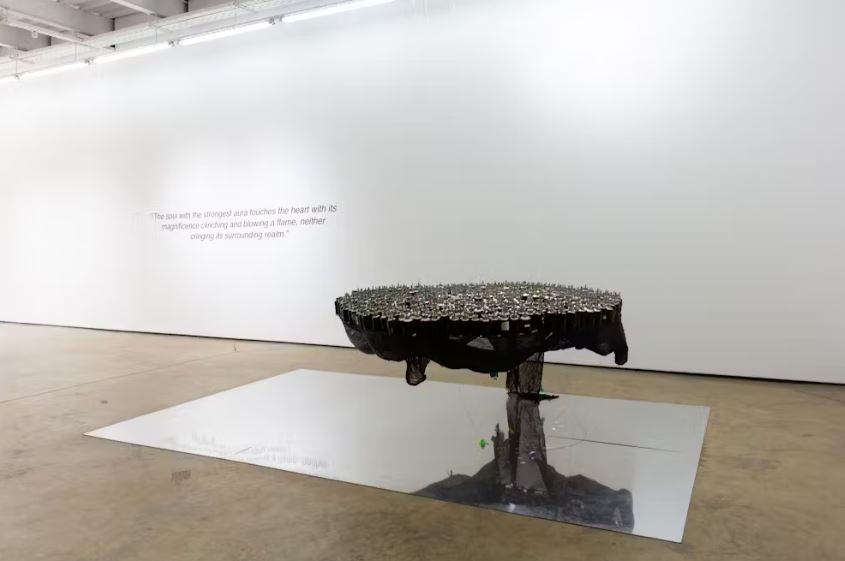 Part of the art on display during the opening of the exhibition on the Wajukuu Art Project in Nairobi. (Photo: Ian Gichohi/The African Arts Trust)
Part of the art on display during the opening of the exhibition on the Wajukuu Art Project in Nairobi. (Photo: Ian Gichohi/The African Arts Trust)
Ngugi’s work represents the harm that human beings are bringing to themselves and the planet through technology and civilisation: as a knife is used, it loses its sharp edge and cannot be effective unless it is sharpened again, gradually diminishing the knife.
The work is titled Mbinguni Kumepasuka, meaning “the skies are broken”.
Woven threads
Two other works by Mwangi are made from the nylon threads commonly used by Kenyan shoemakers. They were created through a collaborative process with women from the community where he lives. One of them is a net with tags and numbers attached to it.
Mwangi explains that the strings symbolise a connection to the international monetary institutions that control developing countries like Kenya – the International Monetary Fund, the World Bank, the World Economic Forum… In his view, they see these countries and their citizens as mere tags and numbers.
Referencing how farmers tag their cows to identify them, the work uses cattle tags that the artist collected from agrovets (agricultural supply shops) in Nairobi. Cattle tags speak to the identification cards, pin numbers and codes used by international institutions. Citizens become cattle in government financing deals made behind closed doors.
In these many ways, In the Absence seeks to trigger thoughts and pose questions about Kenya as a nation. Is Kenya really free from its colonial masters? What does freedom even mean to Kenyans? How will Gen Z help shape a different, more introspective future?
Throughout the gallery, the space is potent with creative energy that might help find the answers.
Top Stories Today
